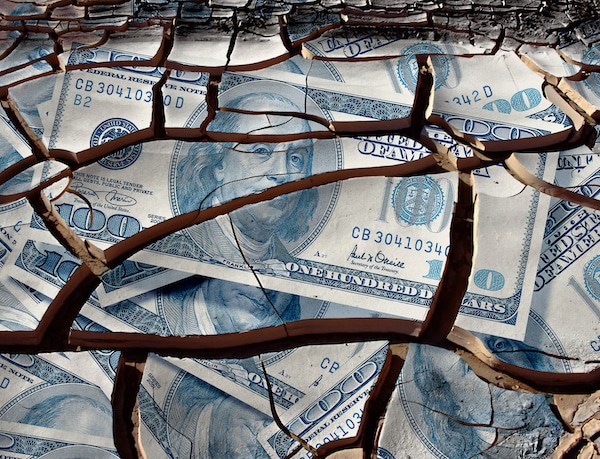by Matt Smith, International Man:

The Great Depression was a well-executed plan to seize assets, impoverish the population, and remake society. What comes next is worse..
A recent book by David Webb sheds new light on exactly what happened during the Great Depression. In Webb’s view, it was a set up.
Webb is a successful former investment banker and hedge fund manager with experience at the highest levels of the financial system. He published The Great Taking a few months ago, and recently supplemented it with a video documentary. Thorough, concise, comprehensible and FREE. Why? Because he wants everyone to understand what’s being done.
TRUTH LIVES on at https://sgtreport.tv/
The Great Taking describes the roadmap to collapse the system, suppress the people, and seize all your assets. And it includes the receipts.
You Already Own Nothing
Webb’s book illustrates, among other things, how changes in the Uniform Commercial Code converted asset ownership into a security entitlement. The “entitlement” designation made personal property a mere contractual claim. The “entitled” person is a “beneficial” owner, but not the legal one.
In the event a financial institution is insolvent, the legal owner is the “entity that controls the security with a security interest.” In essence, client assets belong to the banks. But it’s much worse than that. This isn’t simply a matter of losing your cash to a bank bail-in. The entire financial system has been wired for a controlled demolition.
Webb describes in detail how the trap was set, and how the Great Depression provides precedent. In 1933, FDR declared a “Bank Holiday.” By executive order, banks were closed. Later, only those approved by the Fed were allowed to reopen.
Thousands of banks were left to die. People with money in those disfavored institutions lost all of it, as well as anything they’d financed (houses, cars, businesses) that they now couldn’t pay for. Then, a few “chosen” banks consolidated all the assets in the system.
Centralization and Systemic Risk
As Webb shows, the cake has been baked for years. But this week came a sign it’s coming out of the oven. Last Monday, Bloomberg admitted that measures taken to ostensibly “protect the system” actually amplify risk.
In the wake of the 2008 financial crisis, G20 ‘leaders’ mandated all standardized Over The Counter (OTC) derivatives be cleared through central counterparties (CCPs), ostensibly to reduce counter party risk and increase market transparency. The best known CCP in the US is the Depository Trust and Clearing Corporation (DTCC), which processes trillions of dollars of securities transactions each day.
Before 2012, OTC derivative trades were bi-lateral and counterparty risk was managed by parties to a transaction. When doing business directly with other firms, each had to make sure it was dealing with reliable parties. If they had a bad reputation or were not creditworthy, counterparties could consider them toxic and shut them out of trades. This, according to the wise G20 leadership, was too risky.
With the introduction of central clearing mandates, counterparty risk was shifted via CCPs away from the firms doing the deal to the system itself. Creditworthiness and reputation were replaced with collateral and complex models.
Brokers, banks, asset managers, hedge funds, corporations, insurance companies and other so-called “clearing parties” participate in the market by first posting collateral in the form of Initial Margin (IM) with the CCP. It’s through this IM and a separate and much smaller Default Fund (DF) held at the CCP that counterparty risk is managed.
To ‘Mutualise’ Losses
Shifting risk from individual parties to the collective is a recipe for trouble. But, as explained in a recent report from the BIS, it’s worse than that. The structure of CCPs themselves can cause “Margin Spirals” and “wrong-way risk” in the event of market turbulence.
Read More @ InternationalMan.com



